For a fashion exhibit whose theme is time, it’s ironic that the Metropolitan Museum of Art Costume Institute’s “About Time: Fashion and Duration” is, as a result of the pandemic, opening almost six months later than anticipated. Yet, during a year that feels both frozen in time and flying by faster than any before it, the show, which looks at the relationship between fashion and time through designer ensembles, feels perfectly punctual. “Fashion is indelibly connected to time. It not only reflects and represents the spirit of the times, but it also changes and develops with the times, serving as an especially sensitive and accurate timepiece,” said Andrew Bolton, the Wendy Yu Curator in Charge of The Costume Institute, in the press release. “The exhibition uses the concept of duration to analyze the temporal twists and turns of fashion history.”
Made up of two main rooms, that are designed as oversized clock faces, “About Time” explores this theme through two timelines: chronological — tracing 150 years of fashion, from 1870 to the present, in honor of the Met’s 150th anniversary — and cyclical — exploring the past and present by linking trends and styles in a more abstract way. Within each “minute” of the clock setup, two garments are featured side-by-side.
Featuring mostly black pieces — to “make the comparisons between the pairings immediately,” according to Bolton — the brands selected range from heritage (Chanel, Yves Saint Laurent, Dior, Givenchy) to avant-garde (Comme des Garçons, Issey Miyake, Alexander McQueen, Martin Margiela) and unabashedly modern (Libertine, Off-White, Hood by Air, Rick Owens). The theme of time is further expanded using concepts from philosopher Henri Bergson and writing from Virginia Woolf. (The exhibit opens with a quote from Woolf’s Orlando, and quotations in the exhibit are read aloud by Nicole Kidman, Meryl Streep, and Julianne Moore, who all starred in the 2002 movie The Hours, based on the Michael Cunningham novel that was inspired by Woolf’s Mrs Dalloway.)
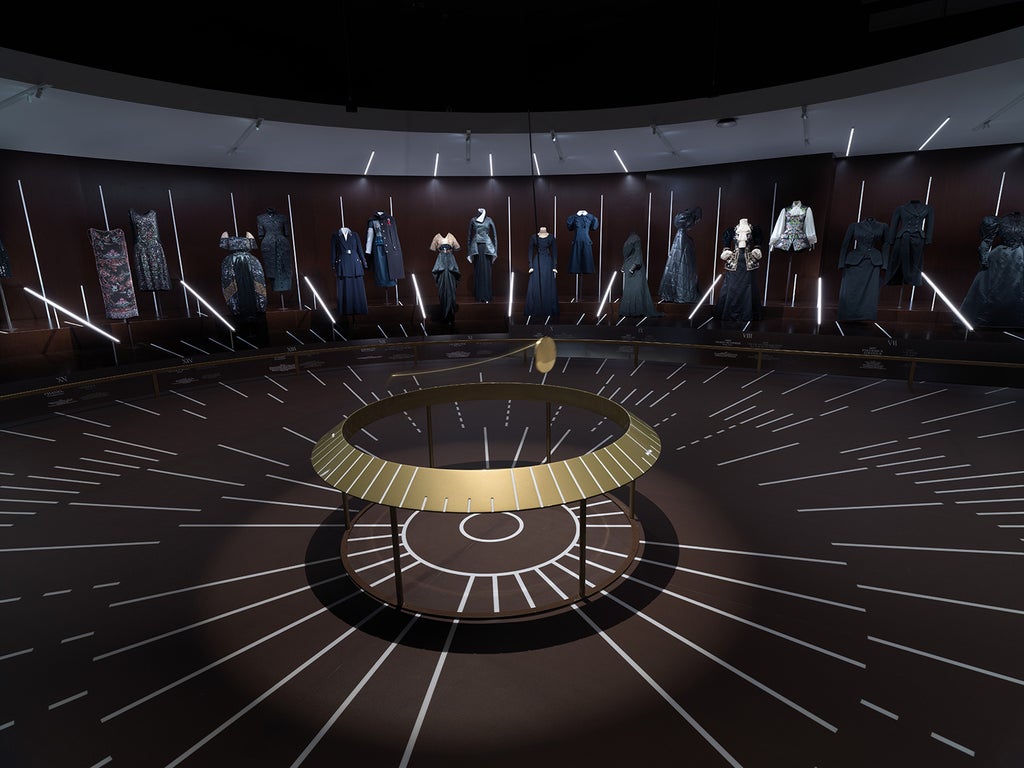
The first room sees 60 looks in a barely lit, round room with a black backdrop, with a swinging, ticking pendulum at its center. Pairings, arranged in chronological order, focus on the evolution of fashion and the influence of the past on modern designers. An 1895 double-breasted wool-twill coat is juxtaposed against a 2020 JW Anderson coat with an oversized leg-of-mutton sleeve that could be confused for its older counterpart; a 1902 Morin Blossier riding jacket, embroidered with gold silk-and-metal thread floral motif, is presented next to a waistcoat of jacquard woven silk that Nicolas Ghesquière, who looked to the Met’s fashion archives in the past for inspiration, created for Louis Vuitton in 2018; and a 1938 Elsa Schiaparelli evening jacket featuring mirror-like, Versailles-inspired designs on the front is shown next to Yves Saint Laurent’s 1978 “broken mirrors” jacket (latter is pictured below).
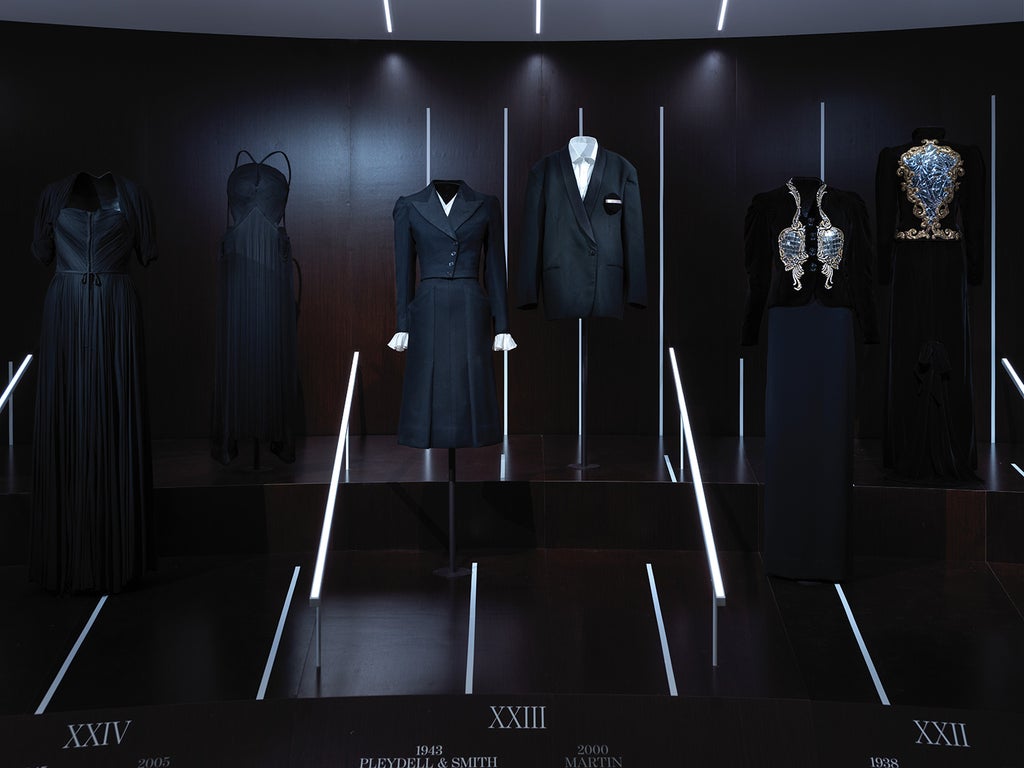
The second room — a winding, mirrored space that sends all senses into overdrive after the darker section — features an additional 60 ensembles that are matched up using less-clear parallels ranging from silhouettes and motifs to materials and techniques. As such, it sees the sculptural 2012 Iris van Herpen masterpiece that Solange wore to the 2018 Met Gala alongside an ivory 1951 Charles James silk satin ballgown (pictured below); a 1983 Karl Lagerfeld Chanel silk crepe dress, layered with trompe l’oeil necklaces and bracelets and belts of pearls, next to Sarah Burton’s 2019 Alexander McQueen crystal-embroidered tunic; and the 1994 Gianni Versace safety-pin embellished dress, famously worn by Elizabeth Hurley, with a 1977 Sandra Rhodes mini with safety pin detailing. While the museum notes refer to these less linear pairings as “disruptions,” today, they feel less like anomalies and more representative of the modern fashion industry — one that, at some point, abandoned looking at the outdated ideals of the past and has begun to find inspiration in the world and the people around them.
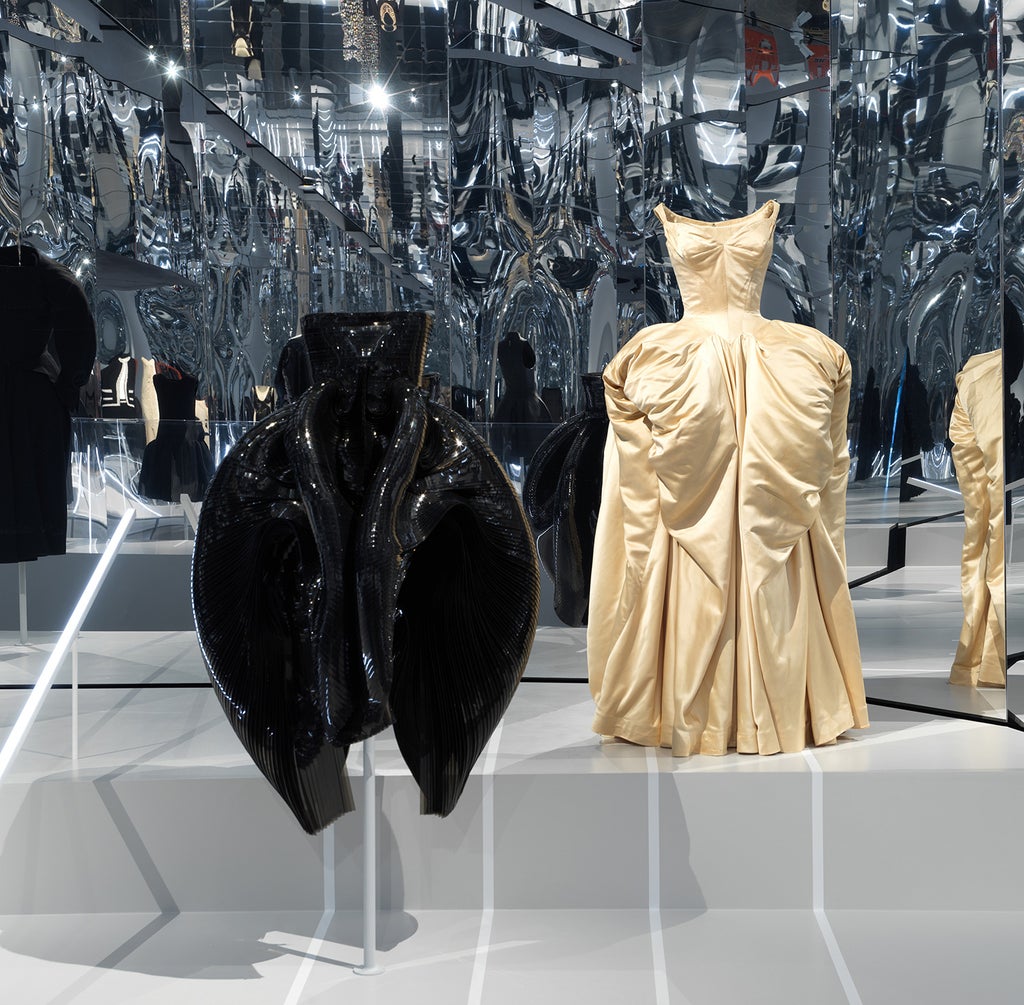
According to Vogue, having time to revisit the “About Time” exhibit, allowed Bolton to respond to the Black Lives Matter movement, and “include more Black, indigenous, people-of-color designers.” In a delightfully ironic pairing, Off-White’s dress, that reads “Little Black Dress,” stands next to, what else but, the Chanel dress that popularized the timeless fashion staple. A vest look from Shayne Oliver’s Hood By Air, the cult-favorite brand that just announced a comeback after a hiatus, likewise makes a clever pairing with a Helmut Lang (where Oliver was a designer in residence) harness ensemble. Patrick Kelly, Olivier Rousteing, Stephen Burrows, and Xuly.Bët’s Lamine Kouyaté round out the exhibit’s roster — starting what Bolton said will become Costume Institute’s “lifelong commitment” of featuring pieces informed by race, ethnicity, gender, and sexuality, rather than just aesthetics. (This may prompt many to say, “About time.”)
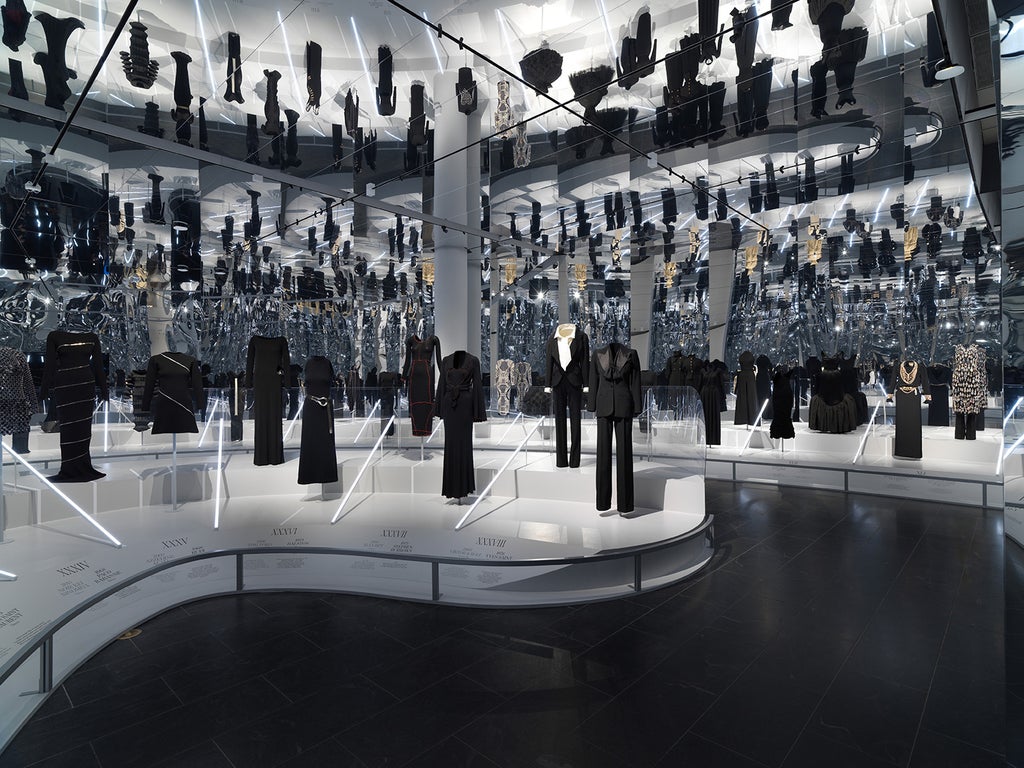
The exhibit tackles another topic that has become very timely as a result of COVID-19. With factories and warehouses forced to close down during lockdown in the spring, the pandemic has forced fashion to take a hard pause, as it was unable to complete collections. This prompted many brands to re-evaluate the constant churning of collections, that not only has a detrimental effect on the environment but also on the designers’ creativity, and look into other solutions, like upcycling. This seems to be the conclusion that “About Time” wants you to arrive at, with the exhibition ending with one of the few non-black looks in the exhibit: a white patchwork gown from Victor&Rolf’s spring/summer 2020 haute couture collection. Made from leftover fabric swatches, the strapless gown — shown suspended above ground in its own mini-room — is, according to the museum notes, a metaphor for the future of fashion, one that includes collaboration and sustainability.
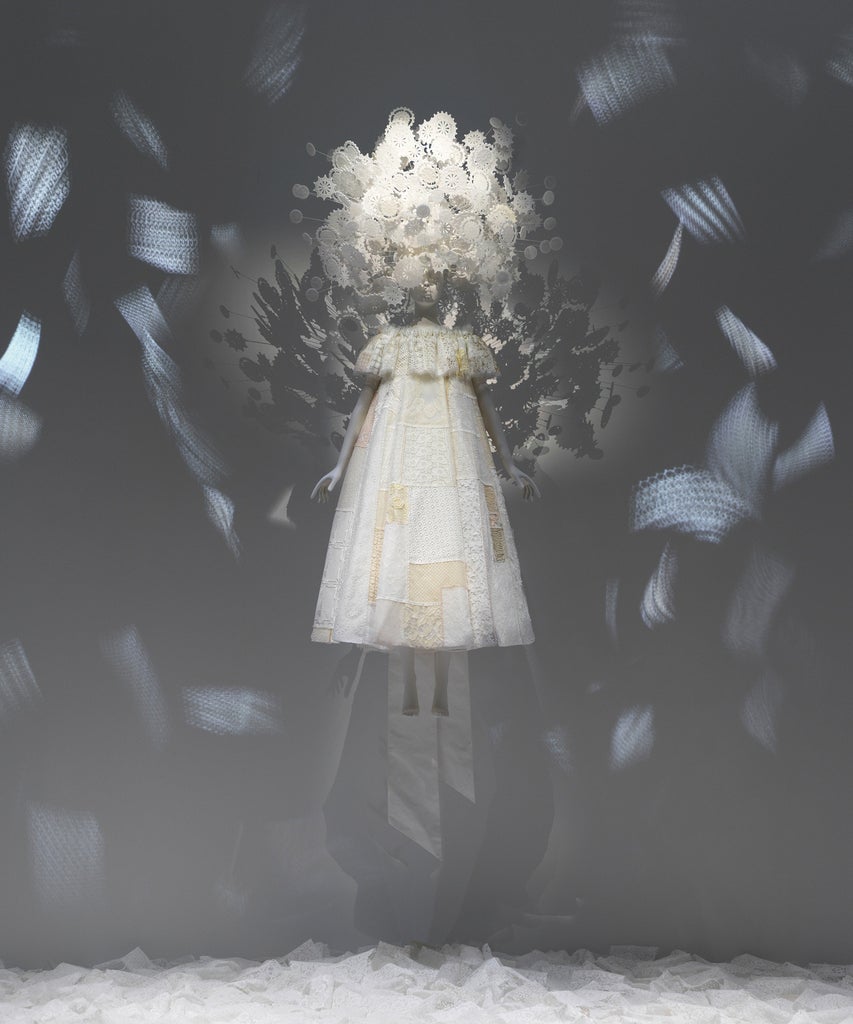
This leaves viewers with a definitive conclusion, which isn’t always a given when it comes to art: The fashion industry needs to continue to embrace sustainability, as well as collaboration and diversity, if it wants to stay relevant and thrive. It’s easy to say that only time will tell if it will; many have over the years. It’s much harder to ignore the clock that has definitively started ticking.
The Costume Institute’s exhibition “About Time: Fashion and Duration” will be on view until February 7, 2021.
Like what you see? How about some more R29 goodness, right here?

No comments:
Post a Comment